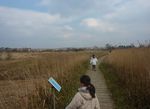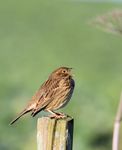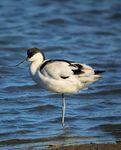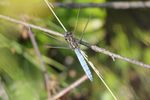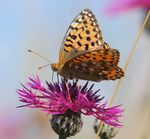Examples of half & full day itineraries
←
→
Page content transcription
If your browser does not render page correctly, please read the page content below
Examples of half & full day itineraries The options for full days/half days out in Dorset are many and varied - these are just a few examples of what we can offer. Most of these itineraries would also be suitable for our Guiding for Groups service. Depending on the itinerary, a full day lasts around 8 hours and a half day around 4 hours. In some cases, two half day itineraries could be combined to make a full day. September - October: Autumn Birds on Ballard & Studland [full day] Starting off from South Beach in Studland, we’ll take a circular walk out over the eastern end of Ballard Down where we’ll have a chance of picking up something a little more unusual amongst the regular migrants that pass through - it's worth the walk for the views alone! For the remainder of the day we’ll make a number of stops along the Studland-Ferry Road to search for waders and wildfowl and keep a look out for any returning divers and grebes that come to winter in Studland Bay. Mediterranean Gulls can be seen in good numbers and we may catch up with Ring-necked Parakeet, still a ‘good bird’ for Dorset. September - March: Urban Birding in Weymouth [full day] Despite its urban environment Weymouth provides some excellent birding - probably some of the best in the country. We’ll spend the day visiting a number of sites in/around the town taking in a variety of habitats including the sea, reed beds, grazing marsh and woodland. Sites will include the RSPB reserves at Radipole Lake for ducks and gulls, and Lodmoor for waders – both sites have wintering Bittern and Marsh Harrier. We’ll look out over Weymouth Bay and Portland Harbour for grebes and divers and pay a visit to Dorset WT Lorton Meadows for a mixture of woodland/scrub birds. October - March: Winter birding in Purbeck: to see 100 species [full day] A day’s bird racing with the aim of seeing/hearing 100 species during the day. We will meet/end in Wareham and will stay within the Purbeck boundary. The day will be quite intensive as we aim for our target with new birds coming thick and fast to begin with before slowing down as we try to pick off those that have proven more elusive. Our route on the day will depend on a number of variables, such as weather, tides and what birds are about, but may take us Wareham Forest, Swineham Middlebere, Durlston and Studland. We should reach 80 species comfortably but 100+ is not impossible.
September - March: Poole Harbour Circuit – the Birding Hotspots [full day] With birding around Poole Harbour we are spoilt for choice of where to go with many hot-spots to choose from. We’ll keep on the move dropping in to places of interest to find the species that winter here. Depending on time/tides, we’ll visit a number of sites that may include Upton Country Park, Shore Road, Studland, the Hartland Moor-Middlebere-Arne area and Swineham Point. We should pick up a good variety of ducks and waders for which the harbour internationally important for. We should pick up a good variety of other species at these sites including grebes and divers and a selection of small birds. October - February: In Search of Waders… October - February: Swineham Walks… Poole Harbour’s north shore [half day] River, Pits & Harbour [half day] We'll start Lytchett Fields before moving on to Upton We will take a circular walk around the Swineham Country Park (on the shore of Hole's Bay). These two area starting out by following the River Frome from sites should provide the majority of the birds we’ll see Wareham to the gravel pits at Swineham. We’ll on this half-day trip but we’ll continue on to Sandbanks, continue on around into the Piddle Valley before with stop offs at Baiter and Shore Road. completing the circuit back to Wareham. Amongst the expected waders (we could see up to 18 This walk usually provides a good mixture of birds and species) these sites will give us a good chance of finding there is a good chance of seeing Marsh Harrier, and Spotted Redshank, Greenshank, Common Sandpiper, possibly Hen. The pits hold a selection of ducks and Bar-tailed Godwit, Knot and Purple Sandpiper. There have turned up something a little more unusual from should also be a good selection of wildfowl and gulls to time to time such Slavonian Grebe, Little Gull, Scaup add to the days tally. and Ruddy Duck. October - February: Maiden Castle & Thornecombe Wood: Farmland & Woodland Birds [half day] In the dramatic landscape of one of the UK’s top hill-forts we will go in search of farmland birds. The surrounding area often holds large numbers of Golden Plover and Lapwing and is one of the best places to find Corn Bunting (and possibly Grey Partridge). We should also pick up a good mixture of wintering thrushes, finches and gulls as we walk around the earthworks. Buzzards are always plentiful here. We will leave time to visit the nearby Thornecombe Wood where we may be rewarded with Lesser Spotted Woodpecker or wintering woodcock amongst the selection woodland birds.
March - April: Wareham Forest Early Birds [half day] This is often the best month to look for the two heathland specialities. Both Woodlark and Dartford Warbler breed on the open heathland in the forest and this is a good time of the year to catch them in full song. The forest provides some excellent walking and we should pick up a variety of other birds that may include Stonechat, Raven, Crossbill and, if wintering, Great Grey Shrike (March). As we move into April the first summer migrants should be returning and we may hear (see) our first chiffchaff, blackcap and (hopefully) Cuckoo of the year. April - May: Around Weymouth & Portland [full day] From the mid-March, Dorset’s first migrants start to appear - early species include Sandwich Tern, Sand Martin, Swallow and Wheatear. Portland is often the first stopping off point on their journey north and we’ll spend time around the island looking for them. With increased seabird activity off The Bill there may be a chance of a Puffin or two amongst the auks. Moving off Portland we’ll check out the harbour for late ducks, divers and grebes before moving on to Radipole Lake and Lodmoor. This is also a good time to catch up with the elusive Cetti’s Warbler, usually heard but less often seen, Bearded Tit and Marsh Harrier. April - May: Puffins & Passage on the Purbeck Coast [half day] This is a circular walk from Langton Matravers - (and includes some fairly steep slopes so a level of fitness is required). A few pairs of the colourful Puffin breed on the cliffs at Dancing Ledge. We’ll put in some time here to look for them (and for the other auks) coming in to the cliffs before we continue along the coastal path towards Seacombe and Winspit. As well as for local birds, these valleys are great areas to search for newly arrived migrants which are often tucked in amongst the sheltered scrub. These may include Redstart, Ring Ouzel, Whinchat, Yellow Wagtail and a selection of warblers.
May - July: Northern Chalk: Birds & Butterflies of Woods & Downs [full day]
We will visit a number of sites on the county boundary
in the Sixpenny Handley area of north Dorset. In the
woodlands the birds are more readily heard than seen
so we will have a chance to get to grips with a variety of
bird song. Although both Turtle Dove and Nightingale
have declined in Dorset over years they are still found
in this area along with a good mixture of warblers,
including Garden Warbler.
As well as the birds we’ll concentrate on the butterflies
of the chalk grassland and woodland rides where
possibilities include a variety of blues, fritillaries and
White Admiral.
June - July: The Dragons & Damsels of Dorset’s heathland [half day]
Some of the UK’s best dragonfly watching is to be found
on the Dorset heathlands. The old flooded clay
workings and ponds on the heaths hold a good mixture
of “Odos” ranging from the large Emperor and hawkers
to a variety of the diminutive damselflies.
Whilst we are out on the heathland looking for the
dragonflies and damselflies we’ll keep our eyes open
for heathland birds, including Dartford Warbler,
Stonechat and Linnet and heathland flora.
June - July: In Search of Nightjars [half day/evening]
A Dorset experience not to miss is a dusk visit to one of
the county’s heathlands in an evening to find the
enigmatic ‘goatsucker’. Although it is great to see a
Nightjar, it is its distinctive ‘churring’ song that makes
the experience.
Our walk will start at 7.00pm to give us time to look for
other birds, such as Dartford Warbler, Hobby and
Stonechat on Morden Bog. We’ll then move on to
another site locally before the Nightjars become active
as dusk draws in.
We should finish at around 10.00-10.30pm.
Updated: January 2021You can also read




